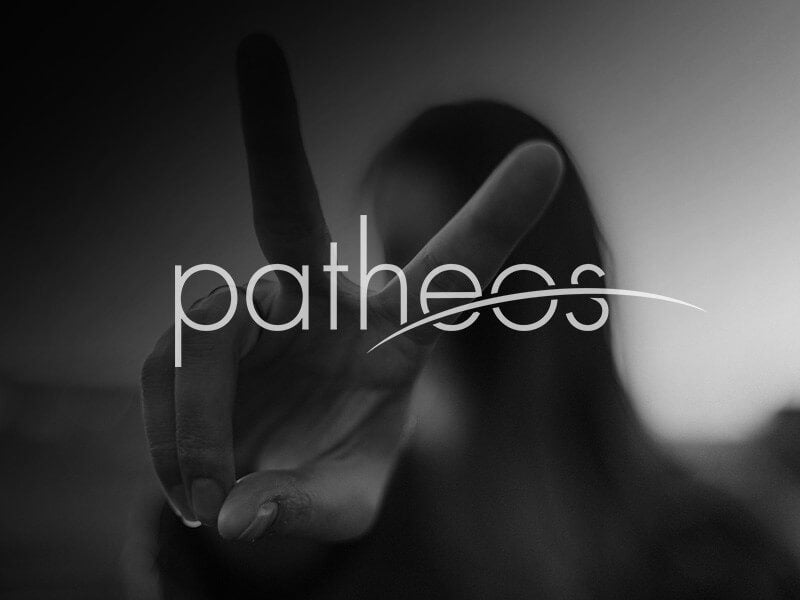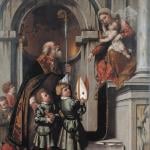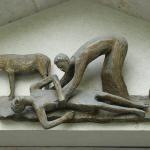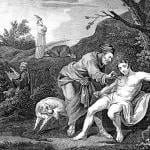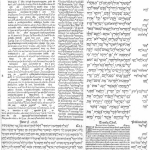So many people think that once they pick up a text, they can simply read it and understand what it says. They think there is little to no interpretation going on when they engage a text. It means what it says, and what it says is what they get out of it. They do not understand that, in the process of reading a text, a reader is going through several interpretative processes, creating a meaning for the text itself. Now, on a subjective level, the meaning the person gets out of the text cannot be said to be wrong – what they get out of the text truly is what they get out of it. But on the other hand, they are doing more, they are transforming the text into a specified, objective meaning, and that meaning may or may not be what the author intended. If it isn’t, then something is wrong, miscommunication is going on, and in one major sense, the reader’s interpretation must be said to be in error. This is why C.S. Lewis once suggested that literary criticism is best done after the author is dead: at that time, the author won’t be able to contradict the meaning placed upon their text by some outside source. Since the author is the originator of the text, they have the final authority to determine whether or not one’s application of their text is proper or not, although if it is not, there could be many explanations for this problem, including how the text was written. Yet, probably more often than not, the problem lies in the fact that an author has many preconceived notions they are using as they write, some which they might make conscious in the text, but many which they do not. The author might not even be conscious of them. That means, in any text, there is always something lost in communication; there is always some mystery left behind it which only the author can reveal.
The truth of this can be shown when we move out of the written word, and enter into the realm of symbols. Indeed, symbols are notoriously difficult to interpret, once the key to their interpretation has been lost. For their meaning is far more context driven than the written word. When most people see a symbol, their own contemporary cultural understanding of it will be the context they uses to understand it, even if that context completely transforms and contradicts the meaning of the symbol as it was intended in its original use. Thus, when Christians saw ankhs on the walls of the Serapeum, they saw it as a sign of the cross, and believed they prophetically predicted the destruction of the pagan temple at the hands of the Christians. Or, in modern days, when the average person sees a Swastika, they immediately think of its connection to Nazism, despite the fact that the symbol is over three thousand years old and most of its meanings have had nothing to do German nationalism.
One of the most interesting things about symbols is that, throughout time, their interpretation can slowly evolve, making for radical, and even contradictory, meanings. A great example of this is found with the pentagram. Many people today associate the symbol with the occult, even Satan himself. However, in the middle ages, Christians saw it as a Christian symbol. In the Arthurian Romance, Sir Gawain and the Green Knight, we find Gawain’s shield has a pentagram painted on it. Since the reader might be confused as to what it symbolizes, the author explained it, giving it a five-fold significance:
“First faultless was he found in his five senses,
and next in his five fingers he failed at no time,
and firmly on the Five Wounds all his faith was set
that Christ received on the cross, as the Creed tells us;
and wherever the brave man into battle was come,
on this beyond all things was his earnest thought:
that ever from the Five Joys all his valour he gained
that to Heaven’s courteous Queen once came from her Child.
For which cause the knight had in comely wise
on the inner side of his shield her image depainted,
that when he cast his eyes thither his courage never failed.
The fifth five that was used, as I find, by this knight
was free-giving and friendliness first before all,
and chastity and chivalry ever changeless and straight,
and piety surpassing all points: these perfect five
were hasped upon him harder than on any man else.
— Sir Gawain and the Green Knight in Sir Gawain and the Greek Knight, Peal, Sir Orfeo. Trans. J.R.R. Tolkien (Boston: Houghton Mifflin Company, 1975), 41.
Here we see, in a customary fashion, the author of Sir Gawain cataloguing the ways the pentagram was understood in his time. It was a multifaceted symbol which represented the virtues and joys found in one who has perfectly put themselves under mantle of Christ. More specifically, the five points of the pentagram recounted the five wounds of Christ, showing us that the symbol was tied to the cross, with the virtues associated with the cross transferred to it: the pentagram was believed to offer aid and protection against evil, especially against magic, explaining why it would be placed upon a shield. Witchcraft could not overcome the power of Christ.
Obviously, such a Christian understanding of the pentagram has been lost, and this is because of its use in various occult traditions. The explanation for this transformation would take us many pages to explain, but when one considers the kinds of occult practices which were practiced in the renaissance, one can begin to grasp how this evolution occurred. Central to this story is its use in “demonic magic” to control demons. If the pentagram was seen as an aid against evil, its placement on the floor would allow a demonologist to summon a demon, and seemingly be protected from its malice. For centuries, this was how it was viewed: as protection in demonic magic. Its association with Christ would eventually be lost, and ancient mathematical symbolism would be used to validate its power (though at one stage, the pagan and Christian traditions would be merged together in occult lore). Centuries later, someone else, probably Eliphas Levi (1810 – 1875), would then transform it into a picture of “the horned beast,” that is, the devil, and give it the meaning many now associate with it. What was once a symbol for Christ was turned upside and became a symbol for the devil, although we could find others, such as the upside-down cross, a symbol with traditional Christian meaning now popularly viewed by society as a Satanic symbol.
When we reflect upon what words are, we learn that they too are symbols. Because of this, it is easy to understand why the science of hermeneutics is important. Like all symbols, the meaning behind a given word is not always so clear, and can evolve over time. Even at the same place and time in history, people can use words differently. Equivocation is easy. Text out of context serves as pretext, because without that context, one can easily impute a meaning to the text which the author did not intend. This is why, however difficult it might be, a charitable interpretation of another’s words is always important. If we enter a conversation for the sake of proving a point, for the sake of an ideology, instead of trying to learn how another thinks, it is easy to lose sight of this. It’s easy to take words, force an interpretation on them and use it to question the credibility and beliefs of another. However, that should only be done if, in the course of conversation, the charitable interpretation is proven false. Only if, in conversation, you ask if a specific interpretation is intended and it is rejected, can you properly lay it aside.





